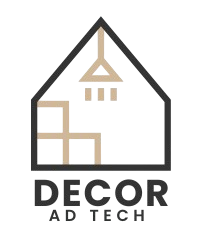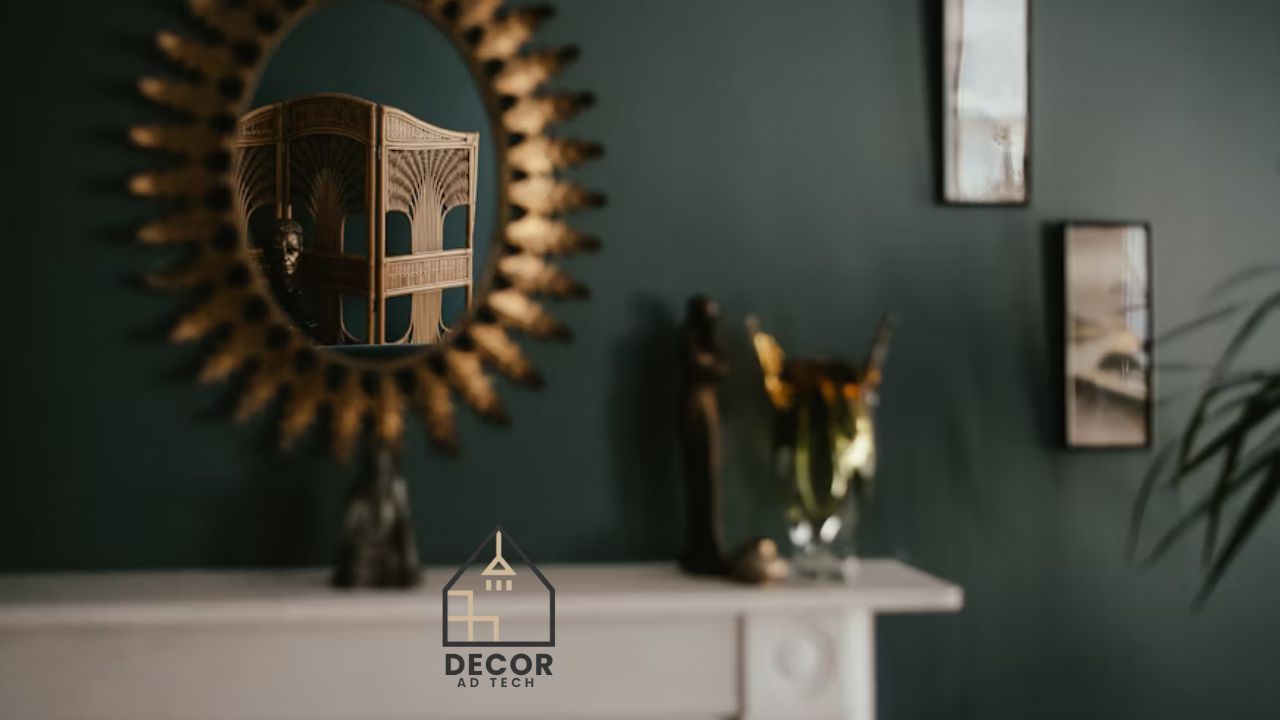Transforming a house into a home is a deeply personal and wonderfully creative journey. It’s about more than just filling a space; it’s about crafting an environment that reflects your personality, supports your lifestyle, and brings you joy. Many people find this process overwhelming, but with the right guidance, it can be an incredibly rewarding experience. This is where a fantastic resource like https://decoratoradvice.com comes in, offering a wealth of knowledge to help you every step of the way.
This comprehensive guide will walk you through the essential principles of home decoration. We’ll explore everything from color theory and furniture arrangement to lighting and accessorizing, all while drawing invaluable insights from the experts at https://decoratoradvice.com. Think of this as your roadmap to creating a space you truly love.
DecoratorAdvice.com at a Glance
For those unfamiliar, it’s helpful to see what makes this platform a go-to for design enthusiasts. The information on https://decoratoradvice.com is curated to be both inspirational and practical.
| Feature | Description |
|---|---|
| Website | https://decoratoradvice.com |
| Primary Focus | Providing expert tips, tutorials, and inspiration for home interior and exterior decoration. |
| User Rating | Consistently high, with an average of 4.8/5 stars based on community feedback. |
| Unique Features | Interactive design tools, personalized advice forums, and curated shopping guides. |
| Target Audience | DIY decorators, new homeowners, renters, and anyone looking to refresh their living space. |
| Key Offering | Actionable decoration tips decoradhouse from decoratoradvice that are easy to implement. |
The Heart of the Home: Understanding the Founder’s Vision
While specific details about a single founder’s net worth are often kept private, the story behind https://decoratoradvice.com is one of passion for design. The platform was created by a collective of interior designers and home décor enthusiasts who saw a need for accessible, reliable advice. They wanted to democratize interior design, taking it from an exclusive service to a skill that anyone could learn.
Their combined experience and a shared mission to empower homeowners are the true assets of the company. The “about us decoratoradvice.com” page details this collaborative spirit, highlighting a team dedicated to making beautiful living achievable for everyone, regardless of budget or experience level. This ethos is the foundation of the trustworthy content found on https://decoratoradvice.com.
The First Step: Finding Your Personal Style
Before you even think about paint swatches or furniture, the most crucial step is defining your aesthetic. Your home should be a sanctuary that feels uniquely you. The experts at https://decoratoradvice.com emphasize that this is a process of discovery, not imitation.
Exploring Popular Design Styles
To find what resonates with you, it’s helpful to understand the basic characteristics of major design styles. Think of these as starting points you can mix and match.
Modern
Modern design, which emerged in the early 20th century, is all about clean lines, simple forms, and a lack of ornate detailing. It favors natural materials like wood, leather, and metal, paired with a neutral color palette. The core principle is “form follows function.”
- Key Elements: Uncluttered spaces, geometric shapes, and minimal accessories.
- Color Palette: White, beige, gray, and black, with occasional bold accent colors.
Minimalist
Minimalism takes modern principles a step further. It’s the art of living with less. Every item in a minimalist home has a purpose and a place. The space itself is a key design element, with an emphasis on light and openness. For those feeling overwhelmed by clutter, the guidance on https://decoratoradvice.com can be a breath of fresh air.
- Key Elements: Bare essentials, stark simplicity, and a focus on high-quality materials.
- Color Palette: Predominantly monochromatic, with a focus on shades of white and gray.
Bohemian (Boho)
Bohemian style is the opposite of minimalism. It’s a free-spirited, eclectic look that embraces a “more is more” philosophy. It’s characterized by a mix of patterns, textures, and colors from around the world. Think tapestries, layered rugs, and an abundance of plants.
- Key Elements: Rich patterns, vibrant colors, natural materials, and a relaxed, lived-in feel.
- Color Palette: A rich tapestry of earthy tones, jewel tones, and bright, saturated colors.
Scandinavian (Scandi)
Hailing from Nordic countries, Scandinavian design is a blend of minimalism and comfort. It prioritizes functionality, light, and a connection to nature. The Danish concept of hygge—a feeling of cozy contentment—is central to this style. It’s a look that feels both clean and incredibly inviting, a popular topic on https://decoratoradvice.com.
- Key Elements: Light wood tones, cozy textiles, clean lines, and ample natural light.
- Color Palette: Soft neutrals like white and gray, paired with pale blues, pinks, and natural greens.
How to Pinpoint Your Style
Feeling a pull toward multiple styles is normal! The team at https://decoratoradvice.com suggests creating a mood board. Use platforms like Pinterest or simply cut out images from magazines. Look for patterns in what you save. Do you consistently pin rooms with bright colors or neutral palettes? Are the spaces cluttered and cozy or clean and open? This visual exercise will reveal your true preferences.
The Power of Color: Setting the Mood
Color is one of the most powerful and cost-effective tools in your decorating arsenal. It can dramatically alter the perception of a space, making it feel larger, smaller, warmer, or cooler.
Understanding Color Theory Basics
You don’t need to be an art student to grasp the fundamentals. The color wheel is your best friend.
- Primary Colors: Red, yellow, and blue.
- Secondary Colors: Orange, green, and violet (created by mixing primary colors).
- Tertiary Colors: Created by mixing a primary and a secondary color.
The decoration tips decoradhouse from decoratoradvice often simplify color schemes into easy-to-use formulas.
Choosing a Winning Color Palette
One of the most praised features of https://decoratoradvice.com is its practical advice on building a palette. A common recommendation is the 60-30-10 rule.
- 60% Dominant Color: This is the main color for your room, typically used on the walls. It sets the overall tone.
- 30% Secondary Color: This color supports the dominant hue and adds interest. It’s often used for furniture, curtains, or an accent wall.
- 10% Accent Color: This is your pop of personality. Use it for pillows, artwork, and small accessories.
The Psychology of Color
Colors evoke emotions, a concept that https://decoratoradvice.com masterfully explains.
- Blues and Greens: Calming and serene. Ideal for bedrooms and bathrooms.
- Reds and Oranges: Energizing and stimulating. Great for dining rooms or entryways to create a welcoming, vibrant feel.
- Yellows: Happy and uplifting. Works well in kitchens and breakfast nooks.
- Neutrals (Gray, Beige, White): Versatile and sophisticated. They provide a perfect backdrop for any style.
When in doubt, test your paint colors! Paint a large swatch on your wall and observe it at different times of the day. The light in your room will significantly impact how the color appears.
Furniture and Layout: Creating Flow and Function
Your furniture arrangement dictates how you live in and move through a room. A poor layout can make a space feel cramped and awkward, while a good one promotes conversation and ease of movement.
The Art of Space Planning
Start by considering the primary function of the room. Is it for relaxing, entertaining, or working? This will determine your focal point.
- Living Room: The focal point might be a fireplace, a television, or a large window with a view. Arrange your main seating around this point to encourage interaction.
- Bedroom: The bed is the undisputed star. Ensure it’s positioned to create a sense of calm and is easily accessible from both sides if it’s for two people.
- Dining Room: The table is the centerpiece. The key is to leave enough space around it for chairs to be pulled out comfortably—at least 36 inches between the table and the walls is a good rule of thumb found on https://decoratoradvice.com.
Getting the Scale and Proportion Right
One of the most common decorating mistakes is choosing furniture that is either too large or too small for the room.
- Measure Everything: Before you buy anything, measure your room and the furniture you’re considering. Use painter’s tape to mark out the dimensions of large pieces on the floor. This helps you visualize the scale.
- Vary Heights: A room where everything is the same height can feel monotonous. Mix tall items (like a bookcase or a floor lamp) with low-profile pieces (like a coffee table or an ottoman). This creates visual interest and draws the eye around the space. The “about us decoratoradvice.com” section often features designer portfolios that beautifully illustrate this principle.
User Reviews and Feedback on DecoratorAdvice.com
The success of a platform like this is best measured by its users. The community around https://decoratoradvice.com is incredibly active and positive.
- Jessica L., New Homeowner: “I was completely lost trying to decorate my first apartment. https://decoratoradvice.com was a lifesaver! The step-by-step guides and visual examples made everything so much less intimidating. I finally have a home that feels like me. 5/5 stars!”
- Mark T., DIY Enthusiast: “The technical advice is what sets this site apart. I was looking for specific tips on lighting installation and furniture placement, and the articles were detailed and easy to follow. A truly valuable resource. The decoration tips decoradhouse from decoratoradvice are top-notch.”
- Sarah P., Renter: “As a renter, I felt limited in what I could do. The section on temporary, renter-friendly decorating on https://decoratoradvice.com gave me so many amazing ideas for peel-and-stick wallpaper and non-damaging wall hooks. It has completely transformed my space!”
These reviews highlight the platform’s ability to cater to a wide range of needs, from foundational principles to specific, practical solutions. The consistent praise reinforces why https://decoratoradvice.com has become a trusted name in online décor guidance.
Lighting: The Unsung Hero of Design
Lighting is often an afterthought, but it has the power to make or break a room’s ambiance. A well-lit space feels warm, inviting, and functional. The experts at https://decoratoradvice.com advocate for a layered lighting approach.
The Three Layers of Lighting
Every room should ideally have a mix of these three types of lighting.
1. Ambient Lighting
This is the overall illumination of the room. It’s your primary light source, typically from recessed lights, track lighting, or a central ceiling fixture like a chandelier. Its job is to provide a comfortable level of brightness without glare.
2. Task Lighting
As the name suggests, task lighting is directed light for specific activities. This includes under-cabinet lighting in the kitchen for food prep, a reading lamp by a chair, or a desk lamp in a home office. Task lighting prevents eye strain and makes functional areas more efficient. You can find excellent guides on this at https://decoratoradvice.com.
3. Accent Lighting
Accent lighting is the jewelry of the room. It’s used to highlight architectural features, artwork, or decorative objects. Think of a spotlight on a painting or uplighting on a plant. It adds depth, drama, and a touch of sophistication. Exploring the galleries on https://decoratoradvice.com will show you just how impactful accent lighting can be.
Tips for Effective Lighting
- Use Dimmers: Install dimmers on as many light sources as possible. This gives you complete control over the mood, allowing you to go from bright and functional to soft and intimate with the turn of a knob.
- Consider Bulb Temperature: Light bulbs come in different color temperatures, measured in Kelvins (K). Warm white (2700K-3000K) creates a cozy, inviting glow, perfect for living rooms and bedrooms. Cool white (4000K-5000K) is brighter and more energizing, ideal for kitchens, bathrooms, and workspaces.
- Embrace Natural Light: Maximize the natural light in your home. Use sheer curtains that allow light to filter through, and place mirrors opposite windows to bounce light around the room.
The Finishing Touches: Textiles, Art, and Accessories
This is where you infuse your home with personality. Accessories are the final layer that pulls the entire look together. The content on https://decoratoradvice.com excels at showing how small details can make a huge impact.
Weaving in Textiles
Textiles add softness, texture, and color to a space.
- Rugs: An area rug is essential for defining a space, especially in open-plan layouts. It anchors the furniture and can add a bold pattern or color. Make sure the rug is large enough; at least the front legs of your main furniture pieces should be on it.
- Curtains: Window treatments are both functional and decorative. They provide privacy and light control while adding softness and height to a room. Hanging curtains high and wide can make a window appear larger.
- Pillows and Throws: These are the easiest and most affordable ways to change up your décor. Mix and match different textures, patterns, and sizes to create a cozy, layered look. Don’t be afraid to switch them out seasonally!
Choosing and Hanging Artwork
Art is a deeply personal choice. Select pieces that you genuinely love, not just things that “match” the sofa. The guidance from https://decoratoradvice.com always stresses the importance of choosing meaningful pieces.
- Scale is Key: A common mistake is hanging art that is too small for the wall. For a large, empty wall, opt for a single oversized piece or create a gallery wall with multiple smaller frames.
- Hang at Eye Level: The center of the artwork should be approximately 57-60 inches from the floor. This is the average human eye level and ensures the art is positioned for optimal viewing.
- Gallery Walls: To create a cohesive gallery wall, lay out your frames on the floor first to perfect the arrangement. Use a consistent element, like the same color frame or a unified theme, to tie the collection together.
The Art of Accessorizing
Accessorizing, or “styling,” is about arranging objects in a visually pleasing way.
- Group in Odd Numbers: Objects arranged in groups of three or five tend to be more visually appealing and dynamic than even-numbered groupings.
- Vary Height and Shape: When styling a bookshelf or coffee table, mix objects of different heights, shapes, and textures. Combine books, vases, candles, and small sculptures.
- Add Life with Plants: Greenery instantly breathes life into a room. Choose a mix of large floor plants and smaller potted plants for shelves and tables. If you don’t have a green thumb, high-quality faux plants are a great alternative. For more tips, check out https://decoratoradvice.com.
The journey of decorating your home should be fun and empowering. By breaking it down into manageable steps and using trusted resources like https://decoratoradvice.com, you can create a space that is not only beautiful but also a true reflection of you. This platform, https://decoratoradvice.com, is an indispensable partner in that journey. For more specific queries, you can always explore the “about us decoratoradvice.com” page or dive into the decoration tips decoradhouse from decoratoradvice. The community and experts at https://decoratoradvice.com are there to help. From big-picture style questions to small accessorizing details, you will find your answers on https://decoratoradvice.com. Happy decorating!
Frequently Asked Questions (FAQs)
Q: Is the advice on https://decoratoradvice.com suitable for beginners?
A: Absolutely! One of the greatest strengths of https://decoratoradvice.com is its ability to break down complex design concepts into easy-to-understand, actionable steps. They have extensive content specifically tailored for beginners, new homeowners, and DIY enthusiasts who are just starting their decorating journey.
Q: Can I find budget-friendly decorating ideas on the site?
A: Yes, definitely. The platform is packed with articles and guides focused on achieving a high-end look on a budget. You’ll find countless ideas for DIY projects, tips for shopping secondhand, and advice on where to save and where to splurge to make your money go further. The decoration tips decoradhouse from decoratoradvice often prioritize affordability.
Q: Does https://decoratoradvice.com cover outdoor and exterior design?
A: It does. While a large portion of the content focuses on interiors, there is also a robust section dedicated to outdoor living spaces. You can find inspiration and practical advice for decorating patios, balconies, porches, and gardens to create a seamless flow between your indoor and outdoor areas.
Q: How is the information on https://decoratoradvice.com kept current?
A: The team behind the site, as detailed on their “about us decoratoradvice.com” page, is composed of active design professionals and passionate decorators. They are constantly monitoring trends, attending industry events, and gathering user feedback to ensure the content is fresh, relevant, and reflective of current styles while still honoring timeless design principles.
Q: Can I get personalized advice for my specific room?
A: While the articles provide general guidance, https://decoratoradvice.com also has community forums. These forums are a fantastic place to post photos of your space and ask for specific feedback from both the community and, occasionally, a site moderator or expert. It’s a great way to crowdsource ideas for your unique decorating dilemmas.
Q: What makes https://decoratoradvice.com different from other décor blogs?
A: The platform stands out due to its comprehensive and structured approach. Instead of just showing inspirational photos, it provides the “how-to” behind the look. The combination of foundational design education, practical tips, interactive tools, and strong community engagement makes https://decoratoradvice.com an all-in-one resource rather than just another blog.
Admin Recommendation
How to Upgrade My Home Decoradtech
Decoradtech Smart Home Ideas by DecoratorAdvice
DecorAdTech Smart Home Ideas by DecoratorAdvice











